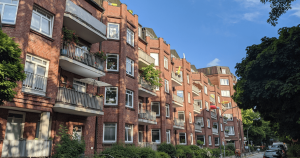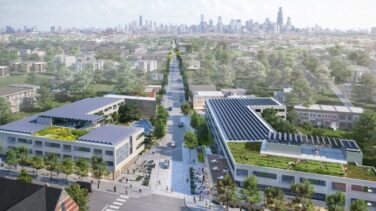 There may be conflicting arguments about whether or not development is a dirty word, but one thing is for sure: communities are demanding more from developers than ever before. It’s not enough to be compliant with parking ratios, height restrictions, historical aesthetics and to build a product that benefits the area’s economy. Traffic, density and design concerns are juxtaposed now with a new wish list that includes affordability, sustainability, and placemaking.
There may be conflicting arguments about whether or not development is a dirty word, but one thing is for sure: communities are demanding more from developers than ever before. It’s not enough to be compliant with parking ratios, height restrictions, historical aesthetics and to build a product that benefits the area’s economy. Traffic, density and design concerns are juxtaposed now with a new wish list that includes affordability, sustainability, and placemaking.
The Driving Forces behind New Development Demands
The housing crisis at its core is a painfully accurate example of supply and demand at play. Last month, the Joint Center for Housing Studies of Harvard University released its State of the Nation Housing Report, which detailed that overall housing production across the country is failing to keep pace with demand, especially on the West Coast and in the Northeast. Beyond a lack of supply, residents are getting priced out of the market and policies proposed to stimulate the production of affordable or workforce priced housing units are getting consistently shot down.
For new housing units or large-scale redevelopments underway, there are new calls for sustainability and placemaking. The “new LEED” is a net-zero building. Community stakeholders and future tenants are on the hunt for properties that fulfill this new standard – and some cities are now making it a requirement.
“Today, creating superior experiences is not just about engaging the tenant. It is also about extending services to the CRE “end user,” or the day-to-day consumer of that space: a retail shopper; a resident living in a multifamily property; an employee working in an office space; or a manufacturer using a warehouse. As attention spans wane, it will likely become more difficult to attract and retain tenants and end users.” – 2020 Commercial Real Estate Outlook, Deloitte Insights
Lastly, placemaking takes many shapes today, but most often involves a public space within a private development – gardens, parks, pavilions, theaters, community rooms, etc. We’ve seen a tremendous uptick in development teams actively seeking public input about which types of placemaking would be most impactful for the communities. They’re asking questions such as:
- The project will include a designated community space. What would encourage you to spend more time in this space?
- What would encourage you to spend more time in the area?
- This project includes added green/open space. Which uses of this space do you think will be most beneficial for the community?
These new demands reflect an emerging expectation – that developments must be designed and built for long-term success and community impact.
What These New Expectations Mean for Developers
In short, the stakes are higher and there’s a slimmer margin of error for getting development right in the eyes of the community. The most successful developer must master mediation: aligning the interests of disparate (sometimes conflicting) stakeholders to reach a joint solution. The city, the residents, and the investors may all want different things. Swiftly synthesizing these loose ends into a cohesive whole is the developer’s new responsibility.
The good news is that many real estate developers, typically owner-developers, are proactively changing their approach to deliver new solutions for these demands. Keane Enterprises acquired the 18-acre Virginia Village development in Leesburg, Virginia in 2017 and has spent the past 12+ months engaging with current business on the property, the community and city officials to shape plans for a full redevelopment of the site with new density, green space and housing.
In many ways, these new demands present opportunities for developers to collaborate directly with the community and build better projects. The glass is indeed half-full on this one.


